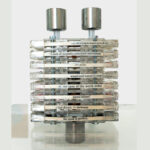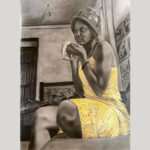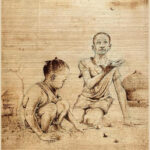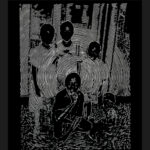Trademarks
| International Conventions,
Treaties and Arrangements |
WIPO
WTO TRIPS Nairobi Treaty on the Protection of the Olympic Symbol ARIPO (Banjul Protocol on Marks) Paris Convention (Paris Union) Although Uganda is a member of the Paris Union, there is no provision in the legislation relating to international arrangements. As such, it should not be possible to claim convention priority. However, the registry is, in practice, accepting priority claims. |
| National legislation | The Trademarks Act, 2010
The Trademarks Regulations, 2012 |
| Protectable subject matter |
|
| Unregistrable trademarks | (a) the words “registered”, “registered trade mark”, “registered design”, “copyright”, “certified”, “guaranteed”, “to counterfeit this is a forgery” or words to like effect;
(b) the words “Red Cross” or “Geneva Cross” and representations of the Geneva and other crosses in red, or of the Swiss federal cross in white on a red ground or silver on a red ground, or such representations in a similar colour or colours; (c) representations of the armorial ensigns of Uganda or any device so nearly resembling them as to be likely to lead to mistake, or of the national flag, or any words, letters, or devices likely to lead persons to think that the applicant has Government patronage or authorization; and (d) a representation of armorial bearings, insignia, a decoration or a flag of any state, administration, city, town, place, society, body corporate, institution or person. |
| Classification | The International Classification of goods and services established by the Nice Agreement applies. A separate application is required for each class of goods and/or services.
The register is divided into Part A and Part B as per legislation. |
| Categories of Trade Marks | Provision is made for: Service marks, Certification marks, Defensive marks, Series marks |
| Filing requirements | An applicant is required to provide
an application for registration in prescribed form;
|
| Procedure | a) The applicant requests for a search upon payment of a prescribed fee to ascertain availability of the trademark.
b) An application for preliminary advice as to the distinctiveness of the trademark is made to the registrar (optional). c) An application for registration is filed upon payment of the prescribed fee. d) The application is reviewed by the registrar to determine its inherent registrability and conflict with prior existing registrations/applications. e) If accepted, the application is advertised in the official gazette for 60 (sixty) days. An opposition to the registration may be made within the prescribed time from the date of advertising. f) If there is no opposition after the expiration of 60 days of advertisement, the trademark is entered in the register and a certificate of registration is issued upon payment of the prescribed fee. |
| Effect of Registration | Legal proceedings to prevent infringement or recover damages can only be instituted in respect to a registered trademark. |
| Effect of Non-use | Registration may be cancelled on the grounds that:
|
| Well known marks | No special provisions |
| Duration and Renewal | The registration of a trademark has a duration of 7 (seven) years and it is renewable every 10 (ten) years. |
| Licensing/Registered Users | Licensing is recognised. A licensee is mandated to register their rights with the trademarks registry to protect their rights in the trademark against third-party infringement.
The license agreement must provide for quality control by the licensor. |
| Assignment or Transmission | Assignments and transmissions of trademarks may be made in connection with or without goodwill of a business.
These rights must be registered. The assignee must make application to register his title. Any document or instrument in respect of which no entry has been made in the register of trademarks will not be admitted in evidence in any court in proof of title to the trademark unless a court otherwise directs. |
| Marking | The symbol ® is used for registered trademarks only while the symbol “TM” can be used on registered or unregistered trademarks. |
| ARIPO | The Banjul Protocol on Marks establishes a trademark application filing system along the lines of the Harare Protocol. Under the Banjul Protocol, an applicant may file a single application either at one of the Banjul Protocol Contracting States or directly with the ARIPO Office. The application should designate Banjul Protocol Contracting States as the States in which the applicant wishes the mark to be protected once the ARIPO Office has registered it. |
| Classification | International classification of goods and services under the Nice Agreement applies. |
| Categories of Trade Marks | Provision is made for service marks, collective marks and certification marks |
| Filing requirements | Application form, power of attorney, application fees, 12 prints of the mark not exceeding 9cm x 9cm |
| Procedure |
|
| Opposition | An opposition may be made after publication but before registration. Opposition procedures laid down under the national laws of the member country apply. |
| Effect of Non-use | Provisions of the national laws of the member country apply. |
| Duration and Renewal | A trade mark registration is effective for an initial period of 10 years and, thereafter, renewable for further periods of 10 years. |
| Licences, Assignments and other similar rights | The ARIPO office can register these rights where they pertain to a mark registered or an application made under the Protocol. However, where such assignments, licences, registered user or other similar rights affect only one contracting state, an application to register such right may be made to the office of the contracting state concerned or to the ARIPO office. Where the application to register such right has been made to the office of the Contracting State, the office shall, within 2 months of registration of such right, provide the ARIPO office with the particulars of such registration. |
Industrial Property Rights
| International Conventions, Treaties and Arrangements |
|
| National Legislation |
|
| Types of Industrial Property Rights under the Industrial Property Act | An applicant can apply for the grant of:
|
| Patentable and non-patentable subject matter | Patentable subject matter: An invention is patentable if it is new, involves an inventive step and is industrially applicable.
Non-patentable subject matter: discoveries and scientific theories and mathematical methods; schemes, rules or methods for doing business, performing purely mental acts or playing games; diagnostic, therapeutic and surgical methods for the treatment of humans or animals; mere presentation of information; plant or animal varieties or essentially biological processes for the production of plants or animals; plants and animals other than micro-organisms, and essentially biological processes for the production of plants or animals other than non-biological and micro-biological processes; pharmaceutical products and test data until 1st January 2016 or such other period as may be granted to Uganda or least developed countries by the Council responsible for administering the TRIPS Agreement ; natural substances, whether purified, synthesized or otherwise isolated from nature; except the processes of isolating those natural substances from their original environment; and the human body and all its elements in whole or in part. Furthermore, the Minister may, in the public interest and for a period no greater than two years, designate as unpatentable inventions concerning certain kinds of products or processes for the manufacture of such products. Non-patentable inventions: plant varieties as provided for in the Plant Variety Protection Act, 2014; and inventions contrary to public order, morality, public health and safety, public policy, principles of humanity and environmental conservation. |
| Novelty Requirements | The invention must not be anticipated by prior art or where a person who is highly skilled in the relevant area could not derive the invention from a combination of prior disclosed art.
Disclosure of an invention is not considered where it occurred within 12 (twelve) months before the filing date or the priority date of the application or disclosure of the invention is a consequence of acts committed by the applicant or his predecessor in title, or of abuse committed by a third party in relation to the applicant or his predecessor in title. |
| Inventive Step | An invention involves an inventive step if having regard to prior art, it would not have been obvious to a person skilled in the art to which the invention relates on the filing date of the application or if priority is claimed on the date validly claimed in respect of the invention. |
| Industrial Application | An invention is industrially applicable if according to its nature it can be made or used in any kind of industry. |
| Filing Requirements |
|
| Registration Procedure |
Note: Where it appears to the Registrar that a filed application contains information prejudicial to the security of Uganda or the public interest, he or she must notify the Minister and may give directions prohibiting/restricting the publication of that information or its communication to any specified person(s).
|
| Duration |
|
| Rights of an Applicant or Patent Owner |
|
| Obligations of a Patent Owner |
|
| Exploitation by Government | A patented invention may be exploited by the Government of third parties authorized by Government where the public interest requires or where the registrar determines that the manner of exploitation of an invention by the patent owner or licensee is not competitive. |
| Utility models | These are inventions that are registrable if they are new and industrially applicable. They are governed by the legal provisions on patents albeit with necessary modifications. An application for a utility model certificate may be converted to an application for a patent and vice versa at any time before a grant and upon payment of the prescribed fee.
Duration: A utility model certificate is valid for 10 years after the date of grant of a utility model and is not renewable. |
| Industrial designs | An industrial design is an aspect of a useful article which is ornamental or aesthetic that may consist of three dimensional features like a shape or surface of an article or a three dimensional feature such as patterns, line or colours. In order to be registered, an industrial design must be new, not contrary to public morality and must not be protected under the Copyright and Neighbouring Rights Act, 2006.
Duration: The registration of an industrial design is valid for 5 years after the date of registration. It may be renewed for two further consecutive periods of 5 years upon payment of the prescribed renewal fee. |
| Technovation | This is defined as a solution to a specific problem in the field of technology, proposed by an employee of an enterprise in Uganda for use by that enterprise, and which relates to the activities of the enterprise but which, on the date of the proposal, has not been used or actively considered for use by that enterprise.
An employee must file a written request for a technovation certificate from the enterprise. Where the requirements under the Act have been satisfied, the enterprise should within 3 months from the date of proposal issue a technovation certificate to the employee. |
| International and Regional Applications | All international applications must be in triplicate, in English and should be accompanied by the prescribed fees for transmitting them. |
| A. ARIPO | The Administrative Council of ARIPO adopted the Harare Protocol on Patents and Industrial Designs to empower the ARIPO Office to receive and process patent and industrial design applications on behalf of state parties to the Protocol.
Procedure:
Note: The Administrative Council adopted amendments to the Harare Protocol and its Implementing Regulations to create a link between the Protocol and the WIPO-governed Patent Cooperation Treaty (PCT). This link commenced operation on July 1, 1994, and has the following effects:
|
| Duration |
|
| B. PCT | The PCT makes it possible to seek patent protection for an invention simultaneously in a large number of countries by filing a single “international” patent application instead of filing several separate national or regional patent applications. The granting of patents remains under the control of the national or regional patent offices in what is called the “national phase”.
Procedure:
|
| National Phase PCT Application | Entry into the national phase requirements:
|
| Non-PCT Application in ARIPO | Filing requirements:
|
Copyrights
| International Conventions, Treaties and Arrangements |
|
| National Legislation |
|
| Types of IP Rights under the Copyright and Neighbouring Rights Act | An applicant can apply for the protection of:
|
| Copyrightable subject matter | The work of an author must be original and reduced to material form
Copyrightable subject matter: Literary, scientific, artistic works and derivative works; Non-copyrightable subject matter: Ideas, concepts, procedures, methods or things of a similar nature, public benefit works |
| Filing Requirements |
|
| Registration Procedure |
|
| Rights of a Copyright Owner |
|
| Duration | Duration of copyright depends on the type of work and right held by the author.
|
| Neighbouring Rights | These are rights attached to the auxiliary role played by performers, producers of sound recording and audio-visual and broadcasting companies. |
| Filing Requirements | Same as copyright requirements |
| Registration Procedure | Same as copyright procedure |
| Rights of Neighbouring Rights Owner | A performer’s rights:
A producer of programme carrying signals has the right to authorise further transmission of the signal in Uganda or from its territory. |
| Duration of Neighbouring Rights |
|
| Other aspects under Copyright laws |
|
Plant Breeders’ IP Rights
| International Conventions, Treaties and Arrangements |
|
| National Legislation |
|
| Filing Requirements | An applicant can apply for the protection of:
|
| Registration Procedure |
|
| Duration |
|
| Rights of Plant Breeders |
|
| ARIPO | Regional protection of plant breeders’ rights is provided under the Arusha Protocol for the Protection of New Varieties of Plants.
Procedure:
|
| Duration | A plant breeder’s rights are granted for a period of 20 years from the date of the grant of the breeder’s right excluding trees and vines, for which a breeder’s right are granted for a period of 25 years from the said date.
The term of protection may be extended for an additional 5 years by a notice in writing to the ARIPO Office in respect of specific genera and species. |
Trade Secrets
| International Conventions, Treaties and Arrangements |
|
| National Legislation |
|
| Filing and Registration Requirements | Not applicable. Trade secrets are protected without registration i.e. trade secrets require no procedural formalities for their protection. However, the following conditions of protection must be met:
|
| Duration | A trade secret is be taken to be protected indefinitely so long as the above conditions are complied with. |
| Rights of a Trade Secret Owner |
|
The information contained in this review is for general guidance and not a substitute for the need to get appropriate professional advice. If you require further information, please write to your usual contact person at Mukumbya Musoke Advocates or Julius M. Musoke






















